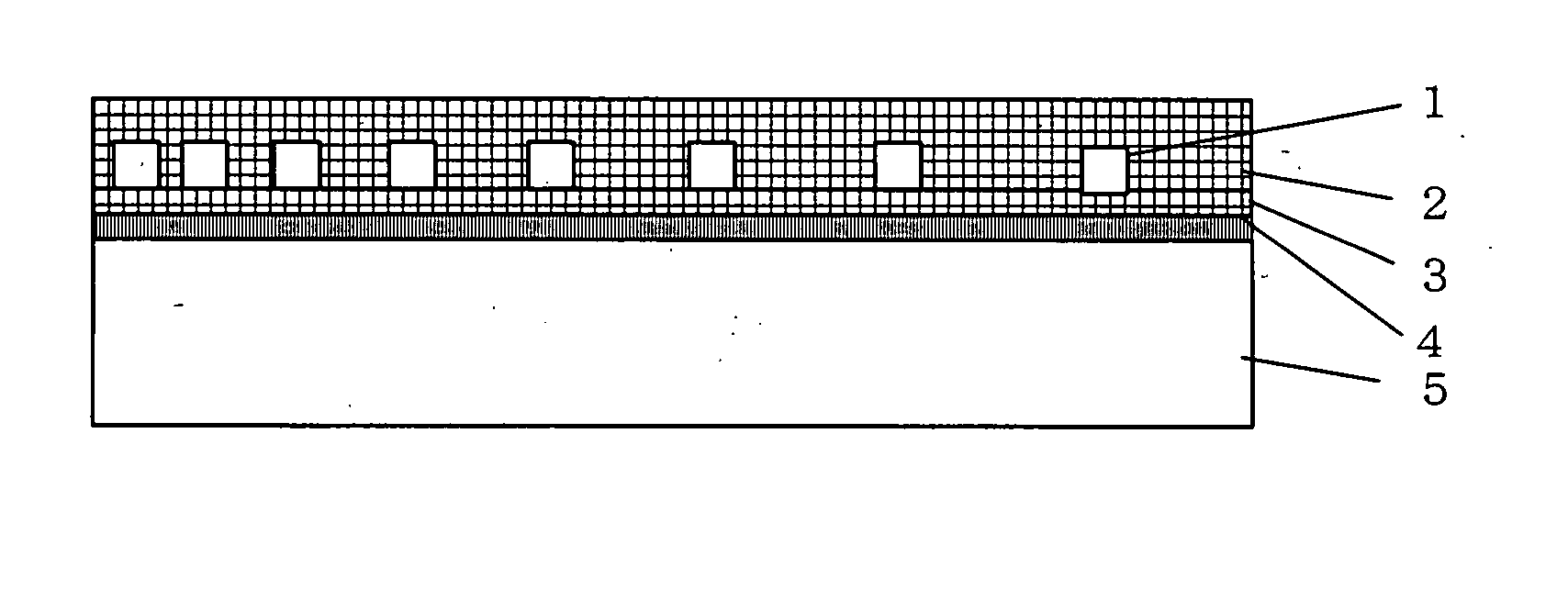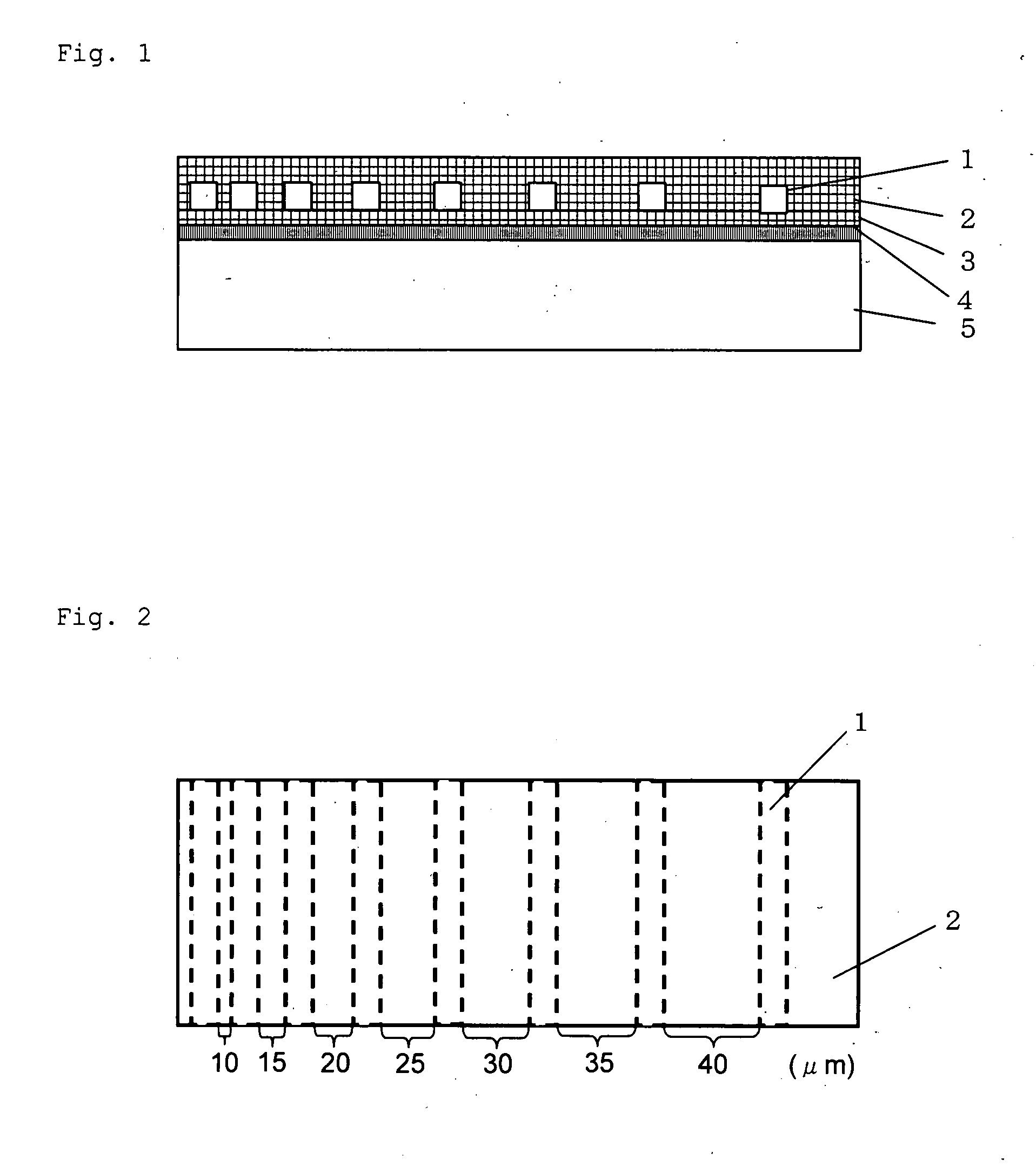Resin composition for optical wiring, and optoelectronic circuit board
a technology of optical wiring and composition, applied in the direction of circuit optical details, optical elements, instruments, etc., can solve the problems of insufficient integration of materials with electric wiring boards, noise and inter-channel crosstalk of emi (electromagnetic interference), and the difficulty of further speedup and densification, so as to reduce the dependence, reduce the loss of optical propagation, and the effect of durable against temperature chang
- Summary
- Abstract
- Description
- Claims
- Application Information
AI Technical Summary
Benefits of technology
Problems solved by technology
Method used
Image
Examples
example 1
[0087] A liquid epoxy resin (“Product #314” produced by Epoxy Technology Inc.) and an organo silica sol with an average particle size of 12 nm dispersed in γ-butyrolactone were mixed using a ball mill to achieve a ratio by volume of epoxy resin:silica=57:43 after curing. A quartz substrate was coated with the mixture using a spin coater, and it was dried in air using an oven at 80° C. for 1 hour, and heated in nitrogen at 150° C. for 1 hour for curing, to obtain a 10 μm thick sample for measurement of refractive index and optical propagation loss. The refractive index of the obtained sample at room temperature at a wavelength of 0.837 μm was 1.484, and the optical propagation loss was 0.49 dB / cm. Separately, a sample of the epoxy resin alone was produced as described above, and its refractive index was 1.51. From these values, the refractive index of silica particles was calculated and found to be 1.45.
[0088] The temperature was changed from 25° C. to 90° C., to measure the change ...
examples 2 to 8
[0090] Samples were prepared and evaluated as described for Example 1, except that the compositions and conditions shown in Table 1 were used. Table 1 shows the evaluation results.
example 9
[0091] Samples were prepared as described for Example 1, except that a slurry with aluminum oxide dispersed in methyl isobutyl ketone solvent was used instead of the organo silica sol, and that it was mixed to achieve a ratio by volume of epoxy-resin:aluminum oxide=60:40 after curing. The measurement wavelength used was 0.85 μm. The evaluation results are shown in Table 1.
PUM
| Property | Measurement | Unit |
|---|---|---|
| wavelength | aaaaa | aaaaa |
| wavelength | aaaaa | aaaaa |
| temperature | aaaaa | aaaaa |
Abstract
Description
Claims
Application Information
 Login to View More
Login to View More - R&D
- Intellectual Property
- Life Sciences
- Materials
- Tech Scout
- Unparalleled Data Quality
- Higher Quality Content
- 60% Fewer Hallucinations
Browse by: Latest US Patents, China's latest patents, Technical Efficacy Thesaurus, Application Domain, Technology Topic, Popular Technical Reports.
© 2025 PatSnap. All rights reserved.Legal|Privacy policy|Modern Slavery Act Transparency Statement|Sitemap|About US| Contact US: help@patsnap.com



